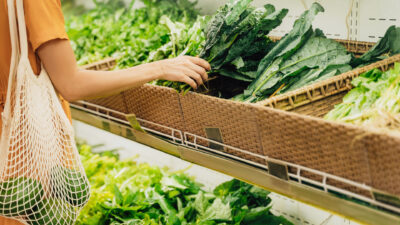Leafy greens have gotten a lot of attention over the past several years — in part because of creative use in foodservice, in part because consumers were looking for more nutritious ingredients, and in part because a lot of folks are interested in various cuisines. But getting the most out of the leafy greens category, such as kale, collards, radicchio and escarole, means playing to its strengths and overcoming its challenges.
The COVID-19 pandemic disrupted how many novice, and even experienced, cooks shopped the category, driving them to packaged, rather than bulk, greens.
Marc Goldman, produce director for Morton Williams Supermarket, Bronx, NY, says he was forced to cut back on bulk greens recently, due to the challenges involved with labor-intensive handling requirements.
“We’re still doing much more packaged than bulk,” Goldman says. “I think people got used to it and it’s easier to handle and prepare. Also, packaged products are less affected by the increase in pricing that we’ve been seeing.”
He’s also seeing Morton Williams consumers purchasing across more of the product category. “It’s not only kale,” Goldman says. “It’s across the whole category. Business has picked up.”
Zeke Kreitner, chief produce officer, Seasons, Flushing, NY, says his customers will pay a little more for the personal attention to their fruits and vegetables. He notes Seasons’ six neighborhood supermarkets and two smaller express stores include produce operations with a “fine touch,” so Seasons will invest in labor for a customer base that demands the consistent quality. The bulk leafy greens are prepared for display in the store and then constantly monitored. Seasons offers packaged product, but bulk leafy greens are important to the assortment. “We’re a smaller operation,” he says. “We have a different touch.”
Read More




